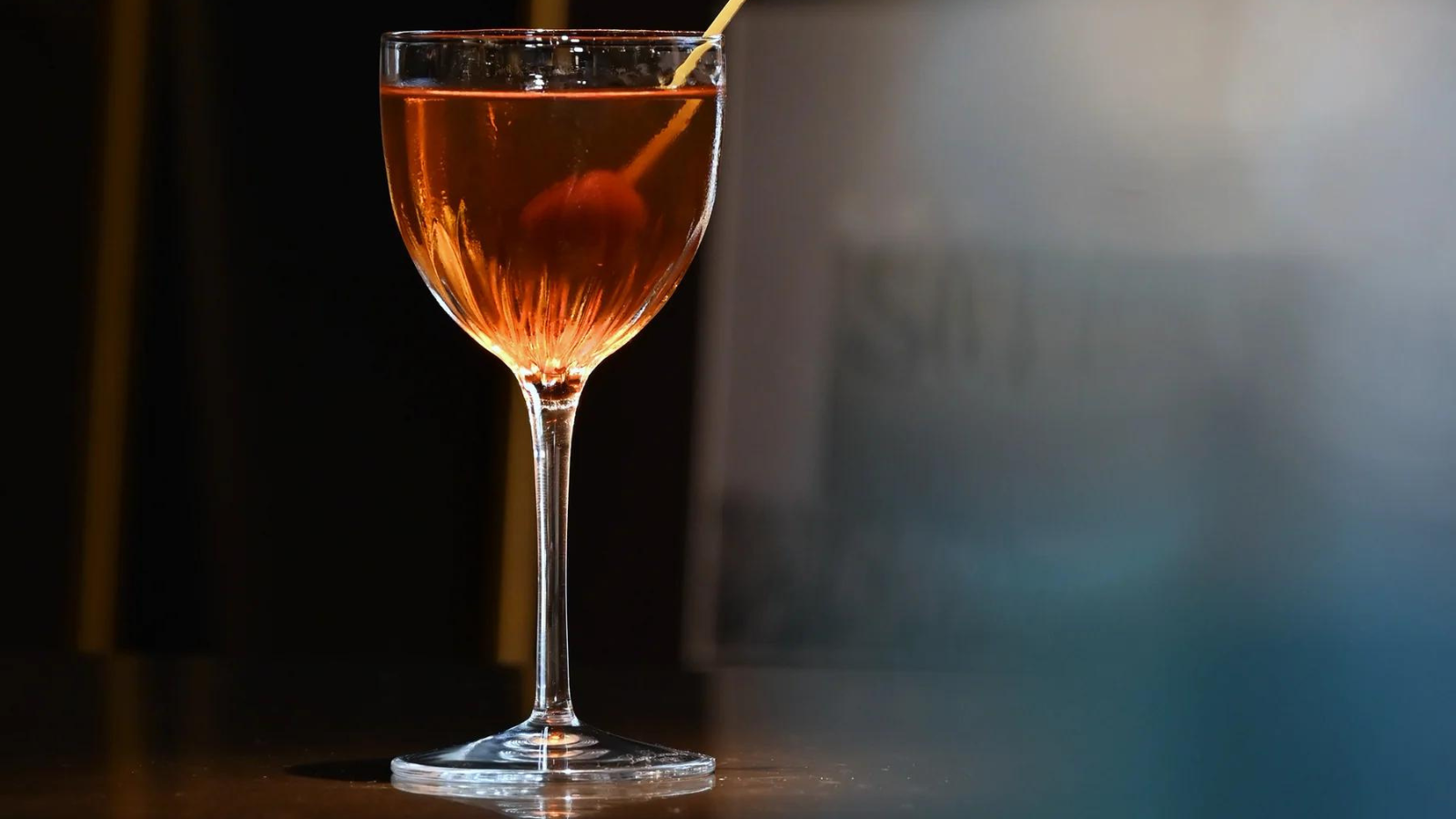
Ever heard of a Nick & Nora glass? Who are Nick and Nora anyway, and why are we talking about them in a blog about glassware? What cocktails are best suited for this glass style, and why is it named after two personalities from literary and film history? There's a lot to unpack here, so let's start with a brief history of Nick and Nora, the characters.
 Nick and Nora Charles were fictional characters created by Dashiell Hammett for his 1934 novel, "The Thin Man." Nick, a retired private detective of Greek ancestry, was married to Nora, a wealthy heiress. They enjoyed a relationship filled with sharp-witted banter as they encountered and solved murder mysteries on the page. Eventually, their broad appeal led to the characters appearing on film, television, radio, and the stage.
Nick and Nora Charles were fictional characters created by Dashiell Hammett for his 1934 novel, "The Thin Man." Nick, a retired private detective of Greek ancestry, was married to Nora, a wealthy heiress. They enjoyed a relationship filled with sharp-witted banter as they encountered and solved murder mysteries on the page. Eventually, their broad appeal led to the characters appearing on film, television, radio, and the stage.
As part of their crime-fighting capers, Nick and Nora often enjoyed discussions over glasses of icy Martinis. The glass? A more bell-shaped style, smaller in stature, designed to avoid spillage. In the late 1980s, legendary bartender Dale DeGroff brought the glass back to popularity when he used it at The Rainbow Room in New York City's Rockefeller Center. As he researched glassware catalogs, he found a retro style that reminded him of the tiny couples from the film and called them Nick & Noras.
 The Nick & Nora glass distinguishes itself from both coupe glasses and V-shaped martini glasses through its unique design and functionality. Unlike coupes, which typically feature shallow, round bowls, or V-shaped martini glasses, known for their angular design, the Nick & Nora glass boasts a petite, arched shape that is both visually appealing and efficient. With a smaller capacity of around five ounces, it strikes a balance between coupes and V-shaped glasses, making it ideal for serving precise cocktail measurements. Its curved bowl not only showcases the drink's aromas but also minimizes spillage, ensuring a sophisticated drinking experience.
The Nick & Nora glass distinguishes itself from both coupe glasses and V-shaped martini glasses through its unique design and functionality. Unlike coupes, which typically feature shallow, round bowls, or V-shaped martini glasses, known for their angular design, the Nick & Nora glass boasts a petite, arched shape that is both visually appealing and efficient. With a smaller capacity of around five ounces, it strikes a balance between coupes and V-shaped glasses, making it ideal for serving precise cocktail measurements. Its curved bowl not only showcases the drink's aromas but also minimizes spillage, ensuring a sophisticated drinking experience.
Bartenders favor the Nick & Nora glass for its versatility, as it accommodates a wide range of cocktails, from classic Martinis to stirred sours, while keeping drinks cooler for longer due to its reduced surface area. This versatility made it popular beyond DeGroff's usage at The Rainbow Room, gaining fashion in the modern wave of the cocktail renaissance that began in places like Manhattan's PDT and Death & Co. cocktail bars. Today, it's popularity persists in many of the mixology collections from Luigi Bormioli and BauscherHepp.





